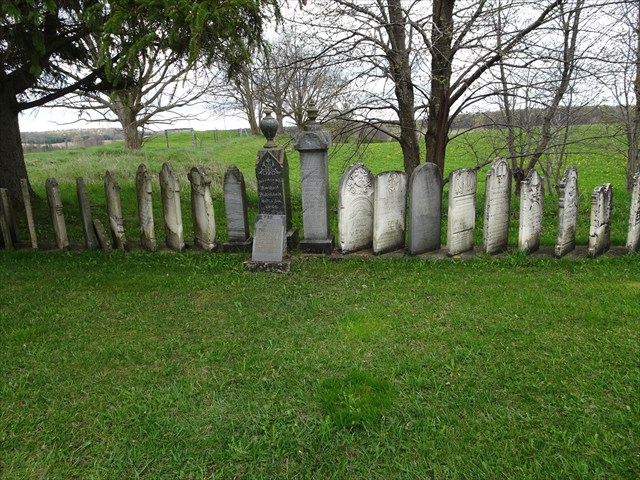
Balaclava - Bruce - Ghost Town series
Ontario is unique in having three communities named Balaclava, all of which became ghost towns. Interestingly both of the other Balaclavas (in Grey and Renfrew) still retain a few original structures along with a small handful of people. Sadly, very few traces exist of Balaclava Bruce, which ironically, played the most long-lasting role of all of the three communities.
Like its other namesakes, Balaclava got its start in the mid 19th century. Located in what was then the United Townships of Carrick and Brant, the settlement came to life after John Shennan opened the first tavern in the township. His brother quickly followed suit by opening the first store. The three Shennan brothers, John, Thomas and Peter, were generally considered to be the first settlers in Balaclava. Other settlers, attracted by the convenience of the store and tavern, began moving in. Shennan added a post office in 1856 that operated under the name of Glenlyon.
The United Townships of Carrick and Brant had been formed in 1854. Many of Carrick's new settlers originated from Germany and over time had developed into experienced and prosperous farmers, who were most eager to take charge of their own affairs. Carrick was the more fortunate of the two townships in that its geographical area was largely swamp-free resulting in very little debt for infrastructure investment, such as bridges and drainage. The residents of Carrick decided it was time to go it alone as a separate township.
History was made at a meeting held by the first Township Council in John Shennan's popular tavern on January 21, 1856. Attending the meeting were Michael Fischer, Seth Roberts, William and Peter McVicar, A. Diemert with James Goraline, acting as clerk. Peter McVicar was appointed as the first reeve of Carrick Township. Michael Fischer succeeded him in 1858, holding the appointee position for the next nine years. Fischer must have served the township well. In 1867, after the office of reeve went to direct vote, he was elected by the ratepayers and continued to hold office until 1878.
By the 1860s, Balaclava had grown to become a busy and thriving community. A Presbyterian church was built around 1861 at the edge of the community. The school, located across the road from the church, followed in 1868. By 1871, Balaclava was a bustling little village that included two masons, two blacksmiths, a carpenter, a cabinetmaker, a tinsmith and a tailor. Michael Fritzinger took over the hotel and William Hay ran the store and served as postmaster. Mail was delivered daily.
Although Balaclava's principal commodity remained farming, it also boasted a sawmill, operated by Edward Markle. Other residents included Charles Shiel, a tailor, William Pepper, who manufactured agricultural implements and George Reddon, a farmer and magistrate. August Kleist, one of the original settlers from Germany, operated the sawmill during the 1870s and 80s. During its best years, the population grew to about 150.
The village of Mildmay was Balaclava's nearest neighbour. Although Mildmay wasn't established until the mid 1860s, it offered excellent waterpower and was able to attract a number of industries including both saw and grist mills and a woollen factory. When it came time for the two communities to bid for a railway station, Balaclava didn't stand a chance. Mildmay won the coveted prize.
Following the arrival of the railway, Mildmay boomed and Balaclava slowly began to wither. The community suffered a major blow when William Hay closed the Glenlyon post office in 1872. Although the sawmill continued to operate for a number of years, Balaclava was unable to attract new industries or businesses. By 1906 it was already described as being "decayed." The construction of Highway 9, which began in the 1920s, cut through most of the original town site, eventually most of it. The hotel stood until 1951, when it was finally demolished after having been used as a farm building for a number of years.
Although most of the original town site has reverted to farmland, a few small vestiges continue to exist. Two original homes are still occupied. The school has undergone substantial renovation and is now in use as a private home. The Presbyterian cemetery, located just off the main highway, has been cleaned up and is well tended. The name Balaclava has been commemorated in at least one business in Mildmay.
*** All historic information has been collected from www.ghosttownpix.com.
See more in our series
Cluny - Ghost Towns Series
Kingarf - Ghost Town Series
Maynecorners - Ghost Town Series
QueenHill - Ghost Town Series
Balaclava Bruce - Ghost Town Series